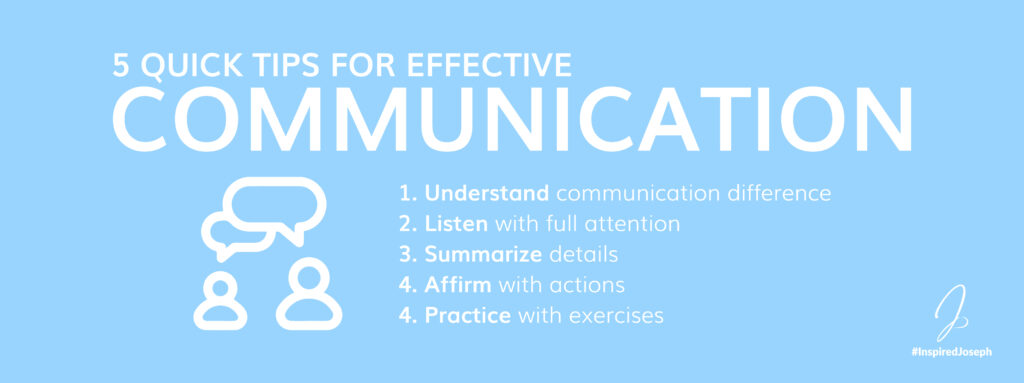The 4 + 1 Communication Styles
Good communication is the bridge between confusion and clarity
The Communication Styles
Different individuals choose to express their views and opinions in various ways. Additionally, different individuals like to receive the opinions and viewpoints of others in different ways. Different approaches to the process of communication, that is, transmitting and receiving information, ideas and views, are referred to as communication styles.
It is challenging to interact with self-awareness if you do not recognize your communication style. If you do not recognize the communication styles of the individuals you are chatting with, it is impossible to enhance your communication strategy.
We classify submissive, aggressive, passive-aggressive, assertive, and +1 manipulative communication styles in terms of how individuals speak in different situations or with others. People may communicate classified as socializers, relators, thinkers, or directors based on whether they have a direct or indirect, supportive or dominating communication style.
Depending on how they choose to share information, people may share it as intuitive, analytical, functional, or personal communicators. If you already identify with a particular personality type or talk regularly with individuals of a specific personality, understanding their communication patterns may help you better how you receive/transmit information.
In this article, we will provide examples of the communication styles mentioned above, discuss their advantages and disadvantages and shed light on how you can use knowledge of different communicative types to better understand and communicate with others and help others better understand and share with you.
Download our free communication style assessment to get a sense of your communication skillset before we get into the 4+1 communication approach. The communication styles of passive, aggressive, assertive, and indirect are all addressed in the bundled exercises. If you’re interested in learning more about the communication patterns of yourself and others around you, you can get a copy of our communication feedback worksheet here.
"The only healthy communication stule is assertive communication"
(Jim Rohn)
Communication Styles we recognize 5 different types of communication styles: submissive, aggressive, passive-aggressive, manipulative, and assertive.

Identifying and understanding one’s unique communication style is essential for adapting one’s approach to best suit the needs of one’s intended audience. Fitting your communication style to the people who need to hear your words is crucial, whether you’re speaking with your boss, at a small sales meeting, to your staff, or an audience of thousands.
Passive
0%
Aggressive
0%
Assertive
0%
Indirect
0%
Manupulative
0%
Let’s investigate the 4 + 1 type of communication styles:
The 4 + 1 Communication Styles Passive | Submissive communicator
The passive also known as the submissive approach to communication is centred on making other people happy and staying out of arguments. Communicators who are passive put the demands of others ahead of their own. They often behave as though others have more rights and more opportunities to participate in talks, meetings, and other communication contexts.
Avoiding expressing viewpoints or emotions, protecting rights, and identifying and meeting needs. Passive people will not openly react to painful or angry events. They let complaints and annoyances develop, often unknowingly. Once they exceed their tolerance threshold for unacceptable behaviour, they are prone to explosive outbursts that are out of proportion to the cause. After an outburst, they may experience humiliation, guilt, and confusion and return to a passive state.
Identifying them
When it comes to their general verbal behavior, passive | submissive communicators tend to:
- Be apologetic (demeanor)
- Avoid expressing their feelings, opinions, and desires
- Avoid confrontations
- Find it difficult to take on responsibility
- Have difficulties making decisions
- Blame others for events and situations
- Refuse compliments
- Feel like victims
- Inability to say no
- Easy-going attitude
When it comes to their non–verbal behavior, passive | submissive communicators tend to:
- Have a soft voice volume
- Hold their heads down
- Twist and fidget
- Avoid eye contact
- Aim to take up as little space as possible
- Make themselves appear smaller, to avoid having other people notice them
Examples of communication with passive | submissive communicators:
- “I’m unable to stand up for my rights.”
- “I’ll let you decide what’s best.”
- “I don’t know what my rights are.”
- “I get stepped on by everyone.”
- “Oh, it’s nothing really, I can easily handle it.”
- “I’m weak and unable to take care of myself.”
- Oh, that’s all right; I didn’t want it anyway.”
- “People never consider my feelings.
How people feel talking to passive | submissive communicators:
- Frustrated because they were told what they wanted to hear instead of the truth
- Frustrated that their time is being wasted on communication that doesn’t get anywhere
- They no longer want to help the passive | submissive communicator. improve his or her communication skills because their help is usually turned down in a roundabout way
- Not knowing what the submissive communicator wants
- They are able to take advantage of the passive | submissive communicator
- Annoyed by the lack of energy around the passive | submissive communicator
Dealing with them (or you)
Tips for interacting with passive | submissive communicators
- Go straight to the point. Start one-on-one conversations, since passive communicators often feel more at ease in private settings than in groups
- Ask them what they think. Give them a lot of time to think about what to say
- Use broad terms. Don’t ask simple “yes” or “no” questions that don’t need much explanation. Be patient when there is a long silence because passive people often need time to think of a response
- Play the role of facilitator in your conversation to get the most out of passive | submissive communicators.
- Being kind and welcoming will enable the passive | submissive communicator to open up and express their true feelings
- To get passive people to speak out in group settings like brainstorming sessions, try highlighting: “Everyone’s opinion is valuable, and there are no incorrect ideas, so please share!”
Ways to be less passive | submissive while talking to others
It’s crucial to concentrate on your communication skills. Look for places and times where you feel comfortable speaking up. If you don’t feel comfortable in groups, look for one-on-one meetings. If you’d instead write than talk, try sending a text instead of meeting in person. Over time, you’ll see that being honest and sharing your thoughts builds positive interaction.
- Work on your communications skills
- Right place, right time
- Do it 1-to-1
- Text/E-mail
- “I see your point of view, however…”
- “I can understand why you might believe that, but…”
- “Your reasoning makes sense, however….”
The 4 + 1 Communication Styles Aggressive communicator
Individuals express their emotions, beliefs, and needs in a manner that violates the rights of others. Therefore, aggressive communicators are physically and/or verbally abusive.
The aggressive style of communication is centered on winning at whatever cost, which often occurs at the expense of others. In marked contrast to passive | or submissive communicators, aggressive communicators place their own needs above those of others and consider their ideas to be the most significant in a conversation, which is also reflected in their behavior.
They often behave as though they own more rights and resources than others. Consequently, their inconsiderate approach may be overpowered by the significance of the information they are attempting to express.
Identifying them
When it comes to their general verbal behavior, aggressive communicators tend to:
- Blame others
- Bully other people
- Be frightening
- Be hostile
- Be threatening
- Be demanding
- Be abrasive
- Be belligerent
- Be explosive
- Be unpredictable
- Be intimidating
- Interrupting people while they’re speaking
When it comes to their non–verbal behavior, aggressive communicators tend to:
- Presenting an overbearing posture
- Using aggressive gestures
- Maintaining intense eye contact
- Invading personal spaces
- Use a loud voice volume to get their ideas and opinions across
- Position themselves to seem bigger than others
- Use prominent, sharp, and fast gestures
- Scowl, frown, or glare at others
- Sarcastic remarks
Examples of communication with aggressive communicators:
- “I’m superior and right and you’re inferior and wrong.”
- “I’m loud, bossy, and pushy.”
- “I can dominate and intimidate you.”
- “I can violate your rights.”
- “I’ll get my way no matter what.”
- “That is just about enough of that! We’ll do it my way!”
- “You’re not worth anything.”
- “It’s all your fault.”
- “I react instantly.”
- “I’m entitled.”
- “Stop being whiny! You make me sick!”
- “You owe me.”
- “I own you.”
- “You are crazy! That’s not what the numbers mean!”
How people feel talking to aggressive communicators:
- They need to defend themselves or leave the conversation
- They must respond with aggression and fight back
- They are angry and vindictive because they feel humiliated, insulted, and even victimized by an aggressive communicator
- Frightened to disclose errors and concerns for fear of being blamed
- Generally less respectful of someone who talks aggressively
Dealing with them (or you)
Tips for interacting with aggressive communicators
- Stay calm and relaxed. Don’t let the way an aggressive communicator acts scare you. Focus your conversation on a way to do something about the problem.
- Maintain professional conversation, and keep out of personal issues. emotions
- Know when to end the conversation
To get the most out of your conversations with people who are aggressive communicators, you may keep an eye out for interruptions and work to avoid them. If the person interrupts you in the middle of a sentence, just say:
“Wait a minute, I’m not done yet.”
Ways to be less aggressive while talking to others
You might find it hard to make strong connections at work. You might be able to stop being so aggressive if you learn more positive ways to talk to people. Reducing stress on other aspects of life helps you. You can deal with stress in a healthy way by getting some exercise and practicing mindfulness, meditation or seek for mental health profession.
For a conversation to work, it needs to go both ways. If you realize that your communication style is too aggressive, you’re already a move toward becoming a better communicator. The best place to start is to look at your aggressive tendencies and determine what makes them happen.
Meanwhile, there are many ways you can try to be more friendly, approachable, and less scary. Start by practicing active listening and providing direct attention to what other people have to say and how they feel. Put yourself in someone else’s shoes and think about how you would feel if you were in their situation. This act will help you develop empathy.
The 4 + 1 Communication Styles Assertive communicator
Individuals say what they think and feel and stand up for their rights and needs in a firm way without hurting the rights of others. These people care about themselves, their time, and their emotional, spiritual, and physical needs. They are strong advocates for themselves while being very respectful of the rights of others.
The most advantageous and productive mode of communication is the assertive one, which develops out of a healthy sense of self-worth. People skilled in assertive communication are neither passive nor overly aggressive but can convey their ideas clearly and persuasively without resorting to manipulation or passive aggression. Furthermore, those who can express themselves confidently are considerate of both their own needs and the needs of others.
Identifying them
When it comes to their general verbal behavior, assertive communicators tend to:
- Expansive gestures
- Collaborative and sharing tendencies
- Healthy expression of ideas and feelings
- Strive to satisfy their wants and rights without offending on those of others
- Respect the needs and rights of other individuals without sacrificing their own
- Be helpful to society
- Display emotional expression
- Make their own judgments, but accept full responsibility for their actions’ results.
- Ask directly for what they desire, yet with concern for others
- Having no difficulty taking praise
When it comes to their non–verbal behavior, assertive communicators tend to:
- Good posture
- A clear voice
- Friendly eye contact
- Medium pitch, velocity, and volume of speech
- Adopt a casual and open stance
- Avoid twisting and squirming, as well as attempts to look smaller or more imposing than they are
- Keep eye contact whilst speaking
- Possess natural, unforced movements
- Respect the personal space of other individuals.
Examples of communication with assertive communicators:
- “We are equally entitled to express ourselves respectfully to one another.”
- “I am confident about who I am.”
- “I realize I have choices in my life and I consider my options.”
- “I speak clearly, honestly, and to the point.”
- “I can’t control others but I can control myself.”
- “I am responsible for getting my needs met in a respectful manner.”
- “I respect the rights of others.”
- “Nobody owes me anything unless they’ve agreed to give it to me.”
- “I’m 100% responsible for my own happiness.”
- “Please Kimberly, could you tune down the volume, or use an earpiece instead? I’m working on the latest set of user tickets and have a hard time focusing because of the sound.”
- “I’m sorry, but I won’t be able to join that video call. I have a doctor’s appointment at that time, which is why I’ve already taken half of that day off.”
- They may rely on the assertive communicator
- they get what the other person is trying to say.
- Critique may be spoken without fear of retaliation.
- they can respect the individual
- They need not make special efforts to make the assertive communicator feel comfortable and safe.
Dealing with them (or you)
Tips for interacting with assertive communicators
- Speak more often if you are an assertive style communicator, if it’s others encourage them to speak more.
- Ask more questions from them to encourage them to share their ideas.
- look for them because they know they can easily make a conversation go in a good direction.
When talking to assertive people, the best thing you can do is copy their healthy and effective way of speaking. Listen to them carefully, stand up for yourself, agree to disagree with them if necessary, ask them what they think, and be open and honest when you talk to them. For instance: “I think this colour scheme would be good for the product. And how would you think?”
Ways to be more assertive while talking to others
Share your ideas, place yourself in positions of leadership and enlist your help dealing with passive, passive-aggressive and aggressive communication styles.
You can work on being more assertive no matter how you talk to people. Since assertiveness is based on self-confidence, you need to know what you’re worth and respect your rights, needs, and wants, but you also need to respect others if you want to be a good communicator. You can start by saying what you think, what you’re worried about, and what you want in a calm, direct way.
It would be best if you didn’t let anger, sadness, or other intense feelings cloud your judgment. If you need time to calm down before you act, take it. Using “I” statements, you can criticize or disagree without sounding harsh.
- For instance, instead of saying: “You have done a terrible job!”
- You can say: “I think this project could have been done better by you.”
- Learn how to say “No” in a clear, polite way. If you’re already busy and your boss wants to give you a new project, you can say something like this: “I know it’s important to start early on the new project, but I’m afraid I won’t be able to start working on it until I’m done with the one I’m already working on.”
- Suggest a middle ground: “I could set up a quick meeting with the team this week to give them a few tips on how to start. If that doesn’t work, I can start the new project on Monday as soon as I get to work. Tell me your thoughts.”
Respect your time and limits, and inform your colleagues that you will be unavailable during your break or off-hours. Instead of having your phone vibrate every two seconds while you’re trying to eat lunch, suspend notifications in the team group chat.
The 4 + 1 Communication Styles Indirect communicator (Passive-Aggressive)
People seem calm on the outside, but they show their anger in a subtle, indirect way or behind the scenes. People who talk in a passive-aggressive way feel like they have no control, are stuck and are angry. In other words, they don’t think they can speak directly to the person they are mad at. Instead, they show their anger by placing the real or imagined person or thing they are angry at in a way that isn’t too obvious.
Identifying them
When it comes to their general verbal behavior, indirect communicators tend to:
- Muttering / Mumbling
- Using sarcasm
- Exhibiting denial
- Giving the silent treatment
- Be indirectly aggressive
- Be sarcastic or ironic
- Be devious
- Be unreliable
- Be sulky
- Be patronizing
- Be untruthful (e.g. they are nice to your face, but are secretly trying to sabotage your work efforts or spread rumours about you)
- Complain more than other people
- Like gossiping
- Invest efforts into actively harming the other person
When it comes to their non-verbal behavior, indirect communicators tend to:
- Presenting a happy face when they’re clearly upset
- talk to you in a sweet voice to hide what they really think and feel about you
- When being condescending, they may posture themselves asymmetrically (e.g., hip trusted out, hand on hip)
- Have quick and unexpected gestures
- Put in more effort to look innocent and sweet
- To create a false feeling of warmth and friendliness, stand near during face-to-face interactions.
Examples of communication with indirect communicators:
- “I’m weak and resentful, so I sabotage, frustrate, and disrupt.”
- “I will appear cooperative but I’m not.”
- “OK, we’ll do it your way! After all, you always know better than me.”
- “Oh, don’t worry about me, I’ll figure this out on my own like I always have to.”
- “You did brilliantly for someone of your education and experience.”
- Confused by the disparity between the passive-aggressive communicators’ words and their actions;
- They are offended and angry when they understand the discrepancy is intentional.
- People may get so enraged when the conduct continues that they desire to respond.
Dealing with them (or you)
Tips for interacting with indirect (Passive-Aggressive) communicators
- Make your needs clear. Try not to leave room for confusion or misinterpretation.
- Confront inappropriate behaviors. Communicate directly with them about their actions. Consider involving a supervisor if your conversation fails to result in change.
- Ask them what they think. Ask them directly for feedback in one-on-one situations to try to get them to be honest.
To maximize your communication with passive-aggressive communicators, you must request that they be straightforward.
- If the passive-aggressive communicator often arrives late to meetings (which may imply they hate the venue, the time, or the organized meetings), address them directly:
- “I’d appreciate it if you could be on time for meetings, Mary.” Is there a particular reason why you are often late for meetings?”.
- You may also address the passive-aggressive communicator in private to reduce the likelihood of a defensive response.
Ways to be less indirect while talking to others
People often use this type of communication to avoid conflict, however passive-aggression is a kind of aggressive behaviour. If you often engage in passive-aggressive behaviour, you need to improve your directness and ability to communicate your frustrations.
Keep in mind that expressing discontent need not lead to hostility. It’s much better to be upfront about what’s upsetting you, fix it right away, and go about your day than to sit in quiet in rage.
Using the three-step process, here’s an example of how you could tackle the situation:
- Why? Ask if there is a specific reason why meetings must take place at that time, demonstrating genuine interest.
- Communicate your viewpoint. Explain why it may make sense to reschedule the sessions at a different hour.
- Request an amendment if your reasoning is valid. Request a meeting’s relocation.
The 4 + 1 Communication Styles Manipulative communicator
The manipulative communication style includes cunning behavior that a person engages in order to achieve their desired results. Manipulative communicators will manipulate and sway others to accomplish their bidding. The thoughts, beliefs, and ideas they express may have an underlying significance that others may not initially recognize.
Identifying them
When it comes to their general verbal behavior, manipulative communicators tend to:
- Being cunning
- Know just how to acquire what they want from the one they need.
- Aim to create certain feelings and responses from others
- Indirectly ask for what they want or need
- In any manner make others feel obligated or sad for them
- Seek praises.
When it comes to their non-verbal behavior, manipulative communicators tend to:
- Have a high-pitched voice that betrays a condescending or envious streak
- Have a guilty or embarrassed look on their face
Examples of communication with indirect communicators:
- “I’m sorry, I don’t know how to work the printing machine works.” – says the senior sales manager to the rookie in order for the newcomers to undertake all of the printing job in the future.
- “I only visited 100 patients today; perhaps, I’ll do better tomorrow!” – says a senior nurse in front of the hospital director and the rest of the medical staff, trying to get them to compliment her.
- Guilty if it seems like they didn’t live up to what they said they would.
- Frustrated because it’s hard to tell, at least at first, what a manipulative communicator really wants and how sincere they are.
- Angry or annoyed by what the manipulative communicator does, and this anger and irritation may lead to a full-blown fight.
- Irritated by what the manipulative communicator does, to the point where they might try to take revenge.
Dealing with them (or you)
Tips for interacting with manipulative communicators
- To get the most out of your interactions with manipulative communicators, you should openly call them out on their behaviors.
- Ask the manipulative communicator some probing questions to see if they have any self-awareness that might make them decline their request or back down. As an example: “Does what you’re asking me to do seem appropriate? Do you think it’s reasonable? ”
Ways to be less manipulative while talking to others
At first, manipulative behaviour might get you what you want, but in the long run, it will make your coworkers dislike and not trust you. In many cases, it can have the opposite of the effect you wanted.
To be a better communicator, you need to be aware of how you manipulate other people and ask yourself why you do what you do. If you want someone to do something, just ask them. Don’t try to get them to help you by appealing to their emotions.
Also, try to figure out how you might be manipulating coworkers in small ways. For example, it’s manipulative to make people wait for your answer in the chat, especially if you’re their boss.
Consider your hidden purpose. Do you want to make them feel insignificant, as if the inquiry was silly or they did something wrong? On the other hand, if you want to talk to a coworker, be clear about what you want. Don’t send just a “hi” and a smiley to get the person to respond right away so you can start talking about something complicated that will take time and that they would rather talk about later.

What is your communication style?
When we break down these four types, we’ll be able to better understand what makes each communication style distinct and its key qualities. Download this Communication Assessment PDF to obtain a better grasp of your primary style of communication.
Types of Communication (how to use them)
Verbal:
- Use a strong, confident speaking voice
- Use active listening
- Avoid filler words
- Avoid industry jargon when appropriate
Non-Verbal:
- Notice how your emotions feel physically
- Be intentional about your non-verbal communications
- Mimic non-verbal communications you find effective
Visual:
- Ask others before including visuals
- Consider your audience
- Only use visuals if they add value
- Make them clear and easy-to-understand
Written:
- Strive for simplicity
- Don’t rely on tone
- Take time to review your written communications
- Keep a file of writing you find effective or enjoyable

Scanxiety – Phases, Symptoms, and Coping with it

Reaching new levels of relaxation using guided imagery – for stress and anxiety

The Emotion Wheel: Everything to know

Coping with lung cancer

Deeper insight into what cancer patients feel
